Daniel S.
Rough_Rock
- Joined
- Jul 8, 2010
- Messages
- 56
Do large Stars and small Lower Halves decrease a Round Brilliant cut diamond's brilliance? While attempting to learn more about H&A cut stones I've noticed certain characteristics: Large stars create large "hot spots" (terminology obtained from GOG's minor facet guide, is there a proper name?) surrounding the center arrow shafts, and small lower halves create very large arrows in the diamond. Both of these characteristics appear to eliminate quite a bit of the white space when looking into the table of the diamond. I have attached some images to describe what I'm referring too kindly taken from GOG's web diamond emporium (I hope this is ok with forum administrators, the logo has been chopped off of each image).
This first image is a diamond with 55% stars. The "hot spots" created by the larger stars seem to eliminate quite a bit of the white space within the table.
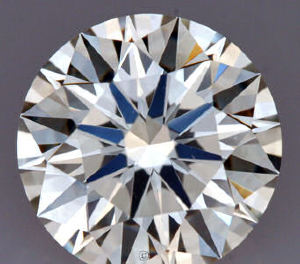
This second image is a diamond with 75% lower halves. The very large arrow shafts seem to eliminate quite a bit of the white space within the table.
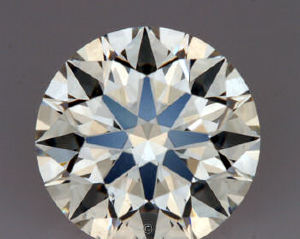
Additionally, the difference that the lower halves make in the heart images seem very clear in these two examples. Could these both be classified as the upper and lower extent of the accepted range of Hearts and Arrows or could a Cutter push the envelope slightly further and still land within the threshold? (By the way, is this threshold vendor determined?) Also, are the lower halves solely responsible for the image characteristics I describe with each image?
This first image shows a diamond with 80% lower halves. The higher lower halves seem to be responsible for the large distance between the heart and arrow (is that it's proper name), the cut cleft, and the not sharply defined tips of the arrows adjacent to the base of the heart.
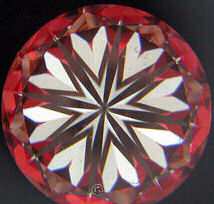
This second image shows a diamond with 75% lower halves. The smaller lower halves seem to be responsible for the nearly not cut clefts (although seem appear cut?), the very small distance between the arrow valley and the base of the heart, and the seemingly much greater convergence of the arrow tips at the center of the stone as compared to the example diamond above.
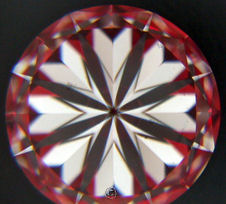
Next, there has been a lot of discussion lately about crispness of H&A patterns. Could any of the very defining characteristics of the two H&A images above be due to not cutting the H&A image in manner that creates crispness? I realize that some of the roughness around the arrow tips above the arrow valley may be due to photography.
Finally, my Wonderful Fiancé and I were working with our wedding coordinator and we both noticed that her diamond ring had seemingly no contrast when looking in the table. The diamond seemed to well cut but no matter how close I looked (while trying to be completely natural of course ) I could not once see the black arrow shafts. Is there some cut characteristic that would cause this or is it that I never got close enough for my head to darken her diamond's arrow shafts?
) I could not once see the black arrow shafts. Is there some cut characteristic that would cause this or is it that I never got close enough for my head to darken her diamond's arrow shafts?
Thanks PS for this wonderful education!
This first image is a diamond with 55% stars. The "hot spots" created by the larger stars seem to eliminate quite a bit of the white space within the table.

This second image is a diamond with 75% lower halves. The very large arrow shafts seem to eliminate quite a bit of the white space within the table.

Additionally, the difference that the lower halves make in the heart images seem very clear in these two examples. Could these both be classified as the upper and lower extent of the accepted range of Hearts and Arrows or could a Cutter push the envelope slightly further and still land within the threshold? (By the way, is this threshold vendor determined?) Also, are the lower halves solely responsible for the image characteristics I describe with each image?
This first image shows a diamond with 80% lower halves. The higher lower halves seem to be responsible for the large distance between the heart and arrow (is that it's proper name), the cut cleft, and the not sharply defined tips of the arrows adjacent to the base of the heart.

This second image shows a diamond with 75% lower halves. The smaller lower halves seem to be responsible for the nearly not cut clefts (although seem appear cut?), the very small distance between the arrow valley and the base of the heart, and the seemingly much greater convergence of the arrow tips at the center of the stone as compared to the example diamond above.

Next, there has been a lot of discussion lately about crispness of H&A patterns. Could any of the very defining characteristics of the two H&A images above be due to not cutting the H&A image in manner that creates crispness? I realize that some of the roughness around the arrow tips above the arrow valley may be due to photography.
Finally, my Wonderful Fiancé and I were working with our wedding coordinator and we both noticed that her diamond ring had seemingly no contrast when looking in the table. The diamond seemed to well cut but no matter how close I looked (while trying to be completely natural of course
Thanks PS for this wonderful education!


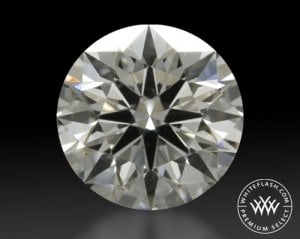
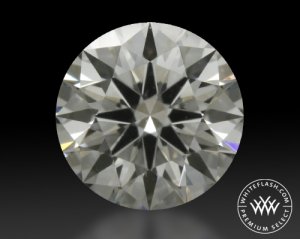
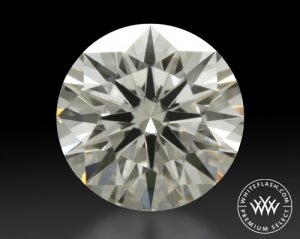
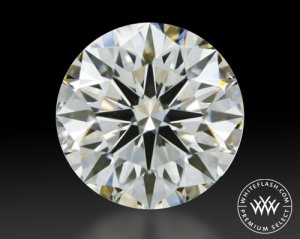


300x240.png)